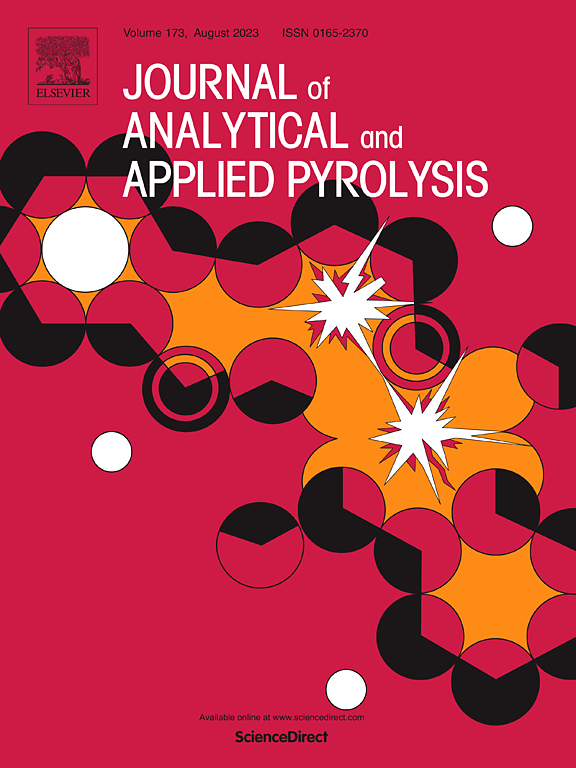Fast pyrolysis of baked wheat straw catalyzed by Fe-Ni modified composite porous molecular sieves for the preparation of aromatics
IF 5.8
2区 化学
Q1 CHEMISTRY, ANALYTICAL
引用次数: 0
Abstract
Wheat straw (WS) baked at 260°C is used as raw material. The HZSM-5 was modified through alkali treatment (NaOH) and metal loading (Ni, Fe), followed by the introduction of MCM-41 layers onto the modified HZSM-5 to synthesize composite pore zeolites. A tubular furnace and Py-GC/MS were used to investigate the effects of different composite pore catalysts on the three-phase products and the distribution of bio-oil components during the catalytic fast pyrolysis(CFP) of WS. The use of 1 %FeAZ@M as a catalyst achieved the highest bio-oil yield (31.31 %). Introducing the micro-meso composite pore zeolite 0.3AZ@M as a catalyst resulted in the highest selectivity of monocyclic aromatic hydrocarbons (MAHs) in the bio-oil from WS CFP (52.12 %), along with a bio-oil yield of 26.50 %. The metal-modified composite pore zeolites exhibit enhanced acidity, which can further enhance the composition distribution in the bio-oil. The use of 1 %NiAZ@M as a catalyst resulted in the highest production of MAHs in the bio-oil from WS of CFP (60.67 %), with a bio-oil yield of 23.27 %. Among the bimetal-modified composite pore zeolites, 1 %Ni1 %FeAZ@M demonstrated the highest selectivity for MAHs, with MAHs in the bio-oil reaching 66.36 %, while the bio-oil yield increased to 28.41 %.
求助全文
约1分钟内获得全文
求助全文
来源期刊
CiteScore
9.10
自引率
11.70%
发文量
340
审稿时长
44 days
期刊介绍:
The Journal of Analytical and Applied Pyrolysis (JAAP) is devoted to the publication of papers dealing with innovative applications of pyrolysis processes, the characterization of products related to pyrolysis reactions, and investigations of reaction mechanism. To be considered by JAAP, a manuscript should present significant progress in these topics. The novelty must be satisfactorily argued in the cover letter. A manuscript with a cover letter to the editor not addressing the novelty is likely to be rejected without review.

 求助内容:
求助内容: 应助结果提醒方式:
应助结果提醒方式:


